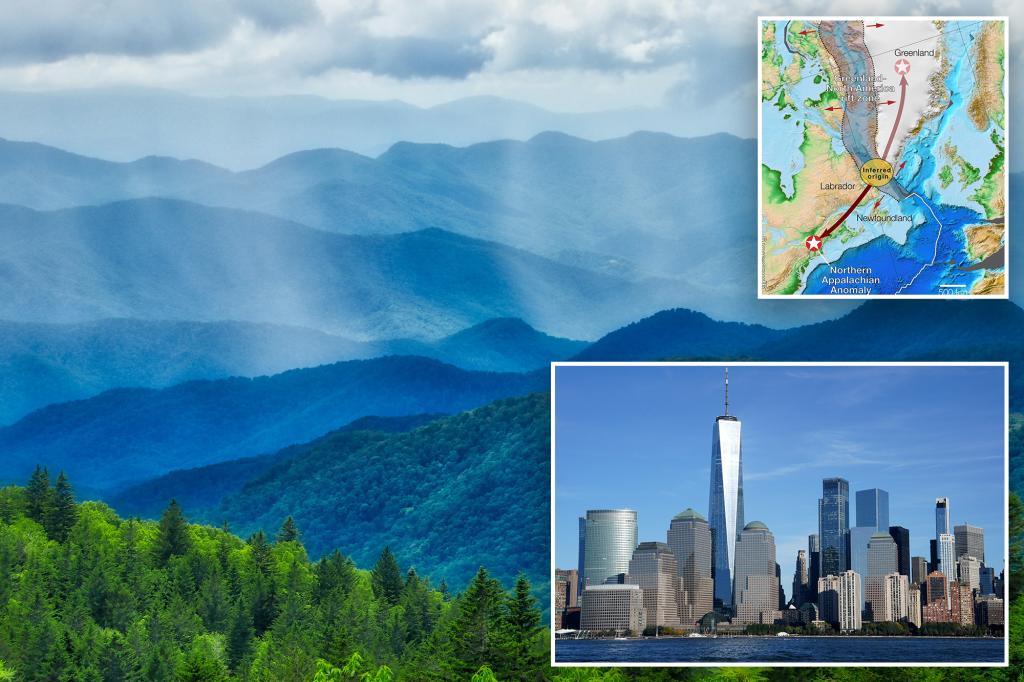Is this the start of Goo York City?
UK scientists have discovered a massive “blob” of rock underneath the Appalachian mountains that’s slowly oozing its way toward New York City, per a slimy new study published in the journal Geology.
“This thermal upwelling has long been a puzzling feature of North American geology,” the study’s lead author, Tom Gernon, Professor of Earth Science at the University of Southampton, said in a statement.
Officially dubbed the Northern Appalachian Anomaly (NAA), this subterranean slimeball sits 125 feet deep underground and extends 220 miles across New England. The team reportedly discovered it using seismic tomography, a method akin to taking a giant CAT scan of the Earth.
While originally thought to have formed 180 million years ago when North America broke away from Africa, the new research suggests that it appeared 80 million years ago when the precursor landmasses to Canada and Greenland were splitting apart, LiveScience reported.
“It lies beneath part of the continent that’s been tectonically quiet for 180 million years, so the idea that it was just a leftover from when the landmass broke apart never quite stacked up,” said Gernon.
In a study published last year in the Journal Nature, the team described how this molten mantle molasses is created when hot rock sitting just outside the Earth’s core rises to fill cracks in the crust caused by land rifts.
When this material eventually cools, it sinks or “drips,” causing a ripple effect along the lower surfaces of the continents that has been called “mantle waves.”
By using a combination of direct geological observations, computer simulations and model plate tectonics and geodynamics, the team was able to replicate the formation of a hot blob 1,120 miles northeast of the Appalachians.
They found that the primordial ooze was moving southwest at a clip of 12 miles every million years.
Fortunately, we don’t need to prepare for an a-blob-alypse anytime soon.
At this rate, researchers estimate that blob-zilla will reach NYC in 10 to 15 million years, like a very slow-moving B-movie monster — it takes a while for underground movements to make a splash in the Big Apple.
The simulation also showed that the blob may have helped uplift the Appalachians, explaining why the mountain range remains so high despite significant erosion over the past 20 million years.
“Heat at the base of a continent can weaken and remove part of its dense root, making the continent lighter and more buoyant, like a hot air balloon rising after dropping its ballast,” said Gernon “This would have caused the ancient mountains to be further uplifted over the past million years.”
After the blob departs the region, however, the Earth’s crust will settle once again and erosion will “continue to wear down the mountains, gradually lowering their elevation,” the scientist said.
This seismic syrup is perhaps also the reason why rare volcanic eruptions can help bring diamonds to the surface, per the study.
While the study was predominantly centered around the NAA, the team also focused on its twin, an anomalous hot zone situated beneath North Central Greenland.
This tectonic lava lamp, which was created during the same continental fragmentation but on the other side of the rift like a molasses-y mirror, generates heat currents at the base of the miles-thick ice sheet, influencing how the ice moves and melts today.
“Ancient heat anomalies continue to play a key role in shaping the dynamics of continental ice sheets from below,” Gernon said. “Even though the surface shows little sign of ongoing tectonics, deep below, the consequences of ancient rifting are still playing out.”
Read the full article here

